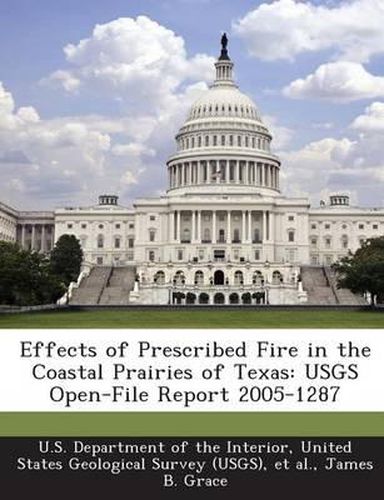Readings Newsletter
Become a Readings Member to make your shopping experience even easier.
Sign in or sign up for free!
You’re not far away from qualifying for FREE standard shipping within Australia
You’ve qualified for FREE standard shipping within Australia
The cart is loading…






Prescribed fire is widely applied for habitat management in coastal ecosystems. Fire management plans typically list a variety of objectives for prescribed burning, including succession management, promotion of native flora and fauna, providing habitat for species of importance, wildfire risk reduction (fuels management), as well as reduction and/or prevention of invasive species. In most cases, the information needed to determine the degree to which management objectives are met is not available. This study sought to provide an assessment of key objectives of fire management at the U.S. Fish and Wildlife Service (USFWS) Texas Mid-coast National Wildlife Refuge Complex. The main purpose of this work was to provide information and recommendations that will support Region 2 of the USFWS in the conduct of their fire and habitat management activities in the Western Gulf coast region. There were four main components of this project: (1) a historical analysis of the role of fire in this ecosystem, (2) the development of standard methodology for assessing and monitoring fire effects in this system, (3) an evaluation of the effects of prescribed burning on the habitat being managed, and (4) an evaluation of the effects of burning on select fauna of special concern. A team of researchers, including some from the U.S. Geological Survey (USGS), Southeast Missouri State University, and Louisiana State University were involved in the various components of this project. Extensive support by USFWS personnel, both at the Texas Mid-coast National Wildlife Refuge Complex and in the Regional Office (Region 2, USFWS), was a key component in this work. Data from the three years of this study were combined with the results of previous USGS studies performed at the site to strengthen our conclusions.
$9.00 standard shipping within Australia
FREE standard shipping within Australia for orders over $100.00
Express & International shipping calculated at checkout
Prescribed fire is widely applied for habitat management in coastal ecosystems. Fire management plans typically list a variety of objectives for prescribed burning, including succession management, promotion of native flora and fauna, providing habitat for species of importance, wildfire risk reduction (fuels management), as well as reduction and/or prevention of invasive species. In most cases, the information needed to determine the degree to which management objectives are met is not available. This study sought to provide an assessment of key objectives of fire management at the U.S. Fish and Wildlife Service (USFWS) Texas Mid-coast National Wildlife Refuge Complex. The main purpose of this work was to provide information and recommendations that will support Region 2 of the USFWS in the conduct of their fire and habitat management activities in the Western Gulf coast region. There were four main components of this project: (1) a historical analysis of the role of fire in this ecosystem, (2) the development of standard methodology for assessing and monitoring fire effects in this system, (3) an evaluation of the effects of prescribed burning on the habitat being managed, and (4) an evaluation of the effects of burning on select fauna of special concern. A team of researchers, including some from the U.S. Geological Survey (USGS), Southeast Missouri State University, and Louisiana State University were involved in the various components of this project. Extensive support by USFWS personnel, both at the Texas Mid-coast National Wildlife Refuge Complex and in the Regional Office (Region 2, USFWS), was a key component in this work. Data from the three years of this study were combined with the results of previous USGS studies performed at the site to strengthen our conclusions.